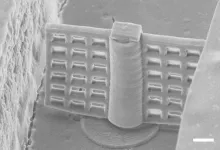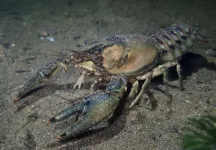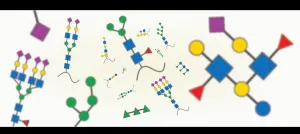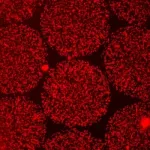(Press-News.org) Humans can do lots of things that plants can't do. We can walk around, we can talk, we can hear and see and touch. But plants have one major advantage over humans: They can make energy directly from the sun.
That process of turning sunlight directly into usable energy - called photosynthesis - may soon be a feat humans are able to mimic to harness the sun's energy for clean, storable, efficient fuel. If so, it could open a whole new frontier of clean energy. Enough energy hits the earth in the form of sunlight in one hour to meet all human civilization's energy needs for an entire year.
Yulia Puskhar, a biophysicist and professor of physics in Purdue's College of Science, may have a way to harness that energy by mimicking plants.
Wind power and solar power, harnessed by photovoltaic cells, are the two major forms of clean energy available. Adding a third -- synthetic photosynthesis -- would dramatically change the renewable energy landscape. The ability to store the energy easily, without requiring bulky batteries, would dramatically improve humans' ability to power society cleanly and efficiently.
Both wind turbines and photovoltaics have downside in terms of environmental effects and complicating factors. Pushkar hopes that artificial photosynthesis might be able to bypass those pitfalls.
"We and other researchers around the world are working incredibly hard to try to come up with accessible energy," Pushkar said. "Energy that is clean and sustainable that we can create with nontoxic, easily available elements. Our artificial photosynthesis is the way forward."
Photosynthesis is a complex dance of processes whereby plants convert the sun's radiance and water molecules into usable energy in the form of glucose. To do this, they use a pigment, usually the famous chlorophyll, as well as proteins, enzymes and metals.
The closest process to artificial photosynthesis humans have today is photovoltaic technology, where a solar cell converts the sun's energy into electricity. That process is famously inefficient, able to capture only about 20% of the sun's energy. Photosynthesis, on the other hand, is radically more efficient; it is capable of storing 60% of the sun's energy as chemical energy in associated biomolecules.
The efficiency of simple photovoltaic cells - solar panels - is limited by semiconductors' ability to absorb light energy and by the cell's ability to produce power. That limit is something scientists could surpass with synthetic photosynthesis.
"With artificial photosynthesis, there are not fundamental physical limitations," Pushkar said. "You can very easily imagine a system that is 60% efficient because we already have a precedent in natural photosynthesis. And if we get very ambitious, we could even envision a system of up to 80% efficiency.
"Photosynthesis is massively efficient when it comes to splitting water, a first step of artificial photosynthesis. Photosystems II proteins in plants do this a thousand times a second. Blink, and it's done."
Pushkar's group is mimicking the process by building her own artificial leaf analog that collects light and splits water molecules to generate hydrogen. Hydrogen can be used as a fuel by itself via fuel cells or be added to other fuels such as natural gas, or built into fuel cells to power everything from vehicles to houses to small electronic devices, laboratories and hospitals. Her most recent discovery, an insight into the way water molecules split during photosynthesis, was recently published in the journal Chem Catalysis: Cell Press.
Scientists in Pushkar's lab experiment with natural photosystem II proteins and synthetic catalysts combinations in attempts to understand what works best - and why. She also puts a priority on using compounds and chemicals that are readily abundant on Earth, easily accessible and nontoxic to the planet.
Progress in artificial photosynthesis is complicated, though, by the fact that photosynthesis is so multifaceted, a fact bemoaned by biochemistry students everywhere.
"The reaction is very complex," Pushkar said. "The chemistry of splitting water molecules is extremely intricate and difficult."
Scientists have been working on artificial photosynthesis since the 1970s. That's a long time, but not when you remember that photosynthesis took millions of years to evolve. Not only that, but scientists believe that, unlike flight, communication or intelligence, photosynthesis has evolved only once - about 3 billion years ago, only about 1.5 billion years into Earth's existence.
Pushkar posits that within the next 10-15 years, enough progress will have been made that commercial artificial photosynthesis systems may begin to come online. Her research is funded by the National Science Foundation.
INFORMATION:
About College of Science
Purdue University's College of Science is committed to the persistent pursuit of the mathematical and scientific knowledge that forms the very foundation of innovation. Nearly 350 tenure-track faculty conduct world-changing research and deliver a transformative education to more than 1,200 graduate students and 4,300 undergraduates. The college is a community of learners that develops practical solutions to today's toughest challenges with degree programs in the life sciences, physical sciences, computational sciences, mathematics and data science.
About Purdue University
Purdue University is a top public research institution developing practical solutions to today's toughest challenges. Ranked the No. 5 Most Innovative University in the United States by U.S. News & World Report, Purdue delivers world-changing research and out-of-this-world discovery. Committed to hands-on and online, real-world learning, Purdue offers a transformative education to all. Committed to affordability and accessibility, Purdue has frozen tuition and most fees at 2012-13 levels, enabling more students than ever to graduate debt-free. See how Purdue never stops in the persistent pursuit of the next giant leap at https://purdue.edu/.
Proper chromosome segregation into two future daughter cells requires the mitotic spindle to elongate in anaphase. However, although some candidate proteins are implicated in this process, the molecular mechanism that drives spindle elongation in human cells has been unknown, until now! Researchers at the Croatian Ruđer Bošković Institute (RBI) have discovered the exact molecular mechanism of bridging microtubules sliding and its role in proper distribution of genetic material during cell division. These latest results were published in the scientific journal Developmental Cell (IF: 10.092).
Cell division is a fundamental process required for stable transmission ...
WASHINGTON -- Researchers have fabricated a magnetically driven rotary microfilter that can be used to filter particles inside a microfluidic device. They made the tiny turning filter by creating a magnetic material that could be used with a very precise 3D printing technique known as two-photon polymerization.
Microfluidic devices, also known as lab-on-a-chip devices, can be used to perform multiple laboratory functions inside a chip that usually measures a few square centimeters or less. These devices contain intricate networks of microfluidic channels and are becoming more and more complex. They may be useful for a variety of applications such as screening molecules ...
Antidepressants can help humans emerge from the darkness of depression. Expose crayfish to antidepressants, and they too become more outgoing -- but that might not be such a positive thing for these freshwater crustaceans, according to a new study led by scientists with the University of Florida.
"Low levels of antidepressants are found in many water bodies," said A.J. Reisinger, lead author of the study and an assistant professor in the UF/IFAS soil and water sciences department. "Because they live in the water, animals like crayfish are regularly exposed to trace amounts of these ...
Pharmaceutical pollution is found in streams and rivers globally, but little is known about its effects on animals and ecosystems. A new study, published in the journal Ecosphere, investigated the effects of antidepressant pollution on crayfish. Just two weeks of citalopram exposure caused changes in crayfish behavior, with the potential to disrupt stream ecosystem processes like nutrient cycling, oxygen levels, and algal growth.
Coauthor Emma Rosi, a freshwater ecologist at Cary Institute of Ecosystem Studies, says, "Animals living in streams and rivers are exposed to a chronic mix of pharmaceutical pollution as a result of wastewater contamination. Our study explored how antidepressant levels ...
New Haven, Conn. --In a new study led by Yale Cancer Center, researchers show the nucleoside transporter ENT2 may offer an unexpected path to circumventing the blood-brain barrier (BBB) and enabling targeted treatment of brain tumors with a cell-penetrating anti-DNA autoantibody. The study was published today online in the Journal of Clinical Investigation Insight.
"These findings are very encouraging as the BBB prevents most antibodies from penetrating the central nervous system and limits conventional antibody-based approaches to brain tumors," said James E. Hansen, MD, associate professor of therapeutic radiology, radiation oncology chief of the Yale Gamma Knife Center at Smilow Cancer Hospital, and corresponding author of the study.
Deoxymab-1 (DX1) ...
Ethiopia, Nigeria, Colombia, Myanmar and Syria are just a handful of the places around the world currently engaged in ongoing civil wars. Even when peace agreements can be negotiated to end civil wars, maintaining stability is incredibly challenging. In these fragile post-conflict areas, a small communal dispute can easily escalate and unravel peace deals.
Peacekeepers can help contain the spread of violence and promote peaceful interactions between groups, but how? And in what situations can peacekeepers be most effective? New research from Washington University ...
Changing your eating habits or altering your circadian clock can impact healthy fat tissue throughout your lifespan, according to a preclinical study published today in Nature by researchers with The University of Texas Health Science Center at Houston (UTHealth).
Healthy fat tissue helps provide energy, supports cell growth, protects organs, and keeps the body warm. A good quality diet and one that is consumed in a rhythmic manner (i.e., during our active cycle) is important in maintaining healthy fat, the researchers found.
Adipocyte progenitor cells mature into adipocytes - the healthy fat cells that make up our adipose tissue, which stores energy as fat. Researchers discovered that adipocyte progenitors undergo rhythmic daily proliferation throughout the ...
A new model that applies artificial intelligence to carbohydrates improves the understanding of the infection process and could help predict which viruses are likely to spread from animals to humans. This is reported in a recent study led by researchers at the University of Gothenburg.
Carbohydrates participate in nearly all biological processes - yet they are still not well understood. Referred to as glycans, these carbohydrates are crucial to making our body work the way it is supposed to. However, with a frightening frequency, they are also ...
Researchers at the University of Maryland School of Medicine (UMSOM) have developed two rapid diagnostic tests for COVID-19 that are nearly as accurate as the gold-standard test currently used in laboratories. Unlike the gold standard test, which extracts RNA and uses it to amplify the DNA of the virus, these new tests can detect the presence of the virus in as little as five minutes using different methods.
One test is a COVID-19 molecular diagnostic test, called Antisense, that uses electrochemical sensing to detect the presence of the virus. The other uses a simple assay of gold nanoparticles to detect a color change when the virus is present. Both tests were developed by Dipanjan Pan, PhD, Professor of Diagnostic Radiology and Nuclear Medicine ...
Two new studies have cast unprecedented light on disease processes in tuberculosis, identifying key genetic changes that cause damage in the lungs and a drug treatment that could speed up recovery.
Tuberculosis (TB) is a lung infection that has killed more humans than any other and until last year was the top infectious killer around the world. Globally, an estimated 10 million people develop the disease each year.
The findings are reported in two papers in the Journal of Clinical Investigation.
In the first study, a team from the University of Southampton used a new 3D culture system they have developed to observe the changes that occur in cells infected with TB. Unlike the laboratory-standard 2D culture system, where cells are placed ...




